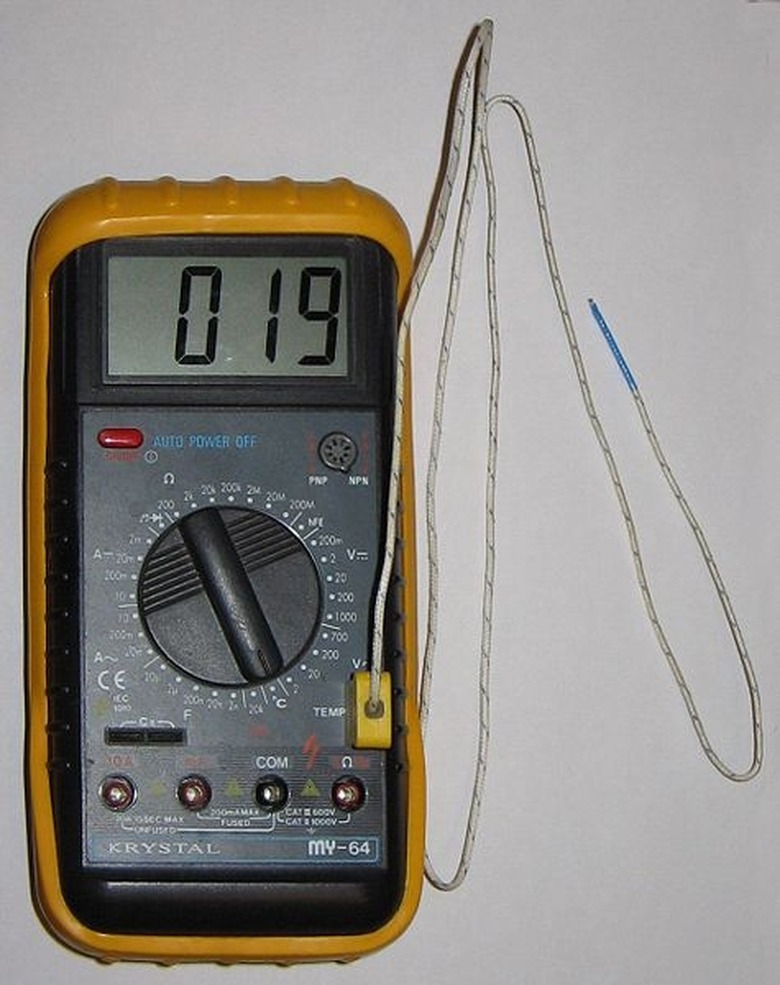What Is Thermocouple?
A thermocouple is a device used to convert heat into electrical power. It measures the temperature difference between two points. Thermocouples are among the most widely used temperature sensors due to their wide availability and very low cost. Unfortunately, however, they are not the most accurate temperature readers.
The Seebeck Effect
The Seebeck Effect
The Seebeck effect plays a key role in the function of a thermocouple. It states that a temperature difference between two metal semiconductors will create electricity. When these semiconductors form a loop, an electric current is made. Thermocouples rely on this effect to measure temperature. When a thermocouple is placed between a temperature gradient between two semiconductors, it becomes part of the circuit created by the Seebeck effect. This allows it to measure a voltage and convert that voltage into a readable temperature gradient depending on the types of metal being used.
The Function of a Thermocouple
The Function of a Thermocouple
When a thermocouple measures a temperature gradient, it is measuring the temperature difference between two semiconductors. This means that a thermocouple must be connected to a multimeter, which allows its user to read the voltage of the two semiconductors involved. The difference of temperature and the voltage are directly related. Therefore, if one can read the voltage running through a circuit, one can then calculate the temperature difference between the two semiconductors. This temperature difference is obtained by measuring the voltage; for the voltage directly corresponds to the temperature difference between the two junctions of the thermocouple's semiconductors.
Types of Thermocouples
Types of Thermocouples
There are many types of thermocouples, all varying in the metal alloy used in their probe. The most common, type K thermocouples (chromel-alumel), are very cheap and have a wide range of temperatures they can measure. However, the cheapness of this type shows in the fact that isn't very accurate and can experience changes in sensitivity at temperatures above 354 degrees Celsius, which is the Curie point for nickel, a constituent of chromel. Type E thermocouples (chromel-constantin) have a higher sensitivity than type K and are non-magnetic. There are many other types of thermocouples, and a complete list can be found in the Resources section.
Applications
Applications
Thermocouples are used in the manufacture of steel to measure the temperature of the steel in order to determine the carbon content of the steel based on its melting temperature. They are also used in pilot lights. This application requires the probe of the thermocouple to be in the pilot flame in order to tell whether the flame is on. When the flame is on, a current is generated in the thermocouple and it reads the heat produced by the flame. When the flame is off, electronic sensors can know to shut the gas off to prevent possible gas leaks.
Laws of Thermocouple Usage
Laws of Thermocouple Usage
Thermocouples obey three laws when in operation. First, the law of homogeneous materials states that temperatures not applied at the junctions of the thermocouple will not affect the produced voltage, because they do not create any more of a temperature gradient. Second, the law of intermediate materials states that new materials injected into the circuit will not change the voltage as long as the junctions formed by the new material are not experiencing a temperature gradient. The law of successive temperatures states that the voltages between three or more junctions can be added together.
References
Cite This Article
MLA
Scott, David. "What Is Thermocouple?" sciencing.com, https://www.sciencing.com/about-5405627-thermocouple/. 9 January 2018.
APA
Scott, David. (2018, January 9). What Is Thermocouple?. sciencing.com. Retrieved from https://www.sciencing.com/about-5405627-thermocouple/
Chicago
Scott, David. What Is Thermocouple? last modified March 24, 2022. https://www.sciencing.com/about-5405627-thermocouple/
